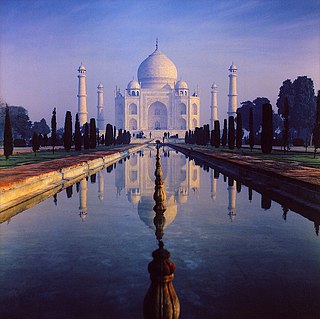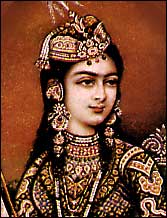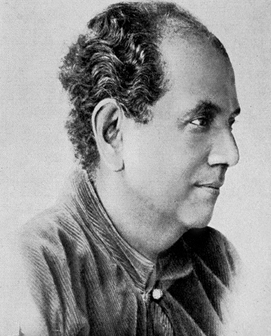
Shahab-ud-din Muhammad Khurram, better known by his regnal name, Shah Jahan, was the fifth Mughal emperor of India, and reigned from 1628 to 1658. Historian J. L. Mehta wrote that under Shah Jahan's reign, the Mughal Empire reached the peak of its glory. Shah Jahan is best remembered for his architectural achievements. His reign ushered in the golden age of Mughal architecture. Shah Jahan commissioned many monuments, the best known of which is the Taj Mahal in Agra, in which is entombed his favorite wife, Mumtaz Mahal. His relationship with Mumtaz Mahal has been heavily adapted into Indian art, literature and cinema. He owned the royal treasury, and several precious stones such as the Kohinoor and has thus often been regarded as the wealthiest person in history.

The Taj Mahal, is an ivory-white marble mausoleum on the right bank of the river Yamuna in the Indian city of Agra. It was commissioned in 1632 by the Mughal emperor Shah Jahan to house the tomb of his favourite wife, Mumtaz Mahal; it also houses the tomb of Shah Jahan himself. The tomb is the centrepiece of a 17-hectare (42-acre) complex, which includes a mosque and a guest house, and is set in formal gardens bounded on three sides by a crenellated wall.

Mumtaz Mahal, born Arjumand Banu Begum was the empress consort of the Mughal Empire from 19 January 1628 to 17 June 1631 as the chief consort of the Mughal emperor Shah Jahan. The Taj Mahal in Agra, often cited as one of the Wonders of the World, was commissioned by her husband to act as her tomb.

Jahanara Begum was a Mughal princess and later the Padshah Begum of the Mughal Empire from 1631 to 1658 and again from 1668 until her death. She was the second and the eldest surviving child of Emperor Shah Jahan and Mumtaz Mahal.

Nur Jahan, born Mehr-un-Nissa was the chief wife of the Mughal emperor Jahangir and is considered by historians to have been the real power behind the throne for much of her husband's reign.

Burhanpur is a city in the Indian state of Madhya Pradesh. It is the administrative seat of Burhanpur District. It is situated on the north bank of the Tapti River and 340 kilometres (211 mi) southwest of the state's capital city of Bhopal. The city is a Municipal Corporation.

Mughal architecture is the type of Indo-Islamic architecture developed by the Mughals in the 16th, 17th and 18th centuries throughout the ever-changing extent of their empire in the Indian subcontinent. It developed the styles of earlier Muslim dynasties in India as an amalgam of Islamic, Persian, Arabic, Turkish and Indian architecture. Mughal buildings have a uniform pattern of structure and character, including large bulbous domes, slender minarets at the corners, massive halls, large vaulted gateways, and delicate ornamentation; Examples of the style can be found in modern-day Afghanistan, Bangladesh, India and Pakistan.

Indian art consists of a variety of art forms, including painting, sculpture, pottery, and textile arts such as woven silk. Geographically, it spans the entire Indian subcontinent, including what is now India, Pakistan, Bangladesh, Sri Lanka, Nepal, and at times eastern Afghanistan. A strong sense of design is characteristic of Indian art and can be observed in its modern and traditional forms.

The Bengal School of Art, commonly referred as Bengal School, was an art movement and a style of Indian painting that originated in Bengal, primarily Kolkata and Shantiniketan, and flourished throughout the Indian subcontinent, during the British Raj in the early 20th century. Also known as 'Indian style of painting' in its early days, it was associated with Indian nationalism (swadeshi) and led by Abanindranath Tagore (1871–1951), but was also being promoted and supported by British arts administrators like E. B. Havell, the principal of the Government College of Art and Craft, Kolkata from 1896; eventually it led to the development of the modern Indian painting.

Abanindranath Tagore was the principal artist and creator of the "Indian Society of Oriental Art". He was also the first major exponent of Swadeshi values in Indian art. He founded the influential Bengal school of art, which led to the development of modern Indian painting. He was also a noted writer, particularly for children. Popularly known as 'Aban Thakur', his books Rajkahini, Buro Angla, Nalak, and Khirer Putul were landmarks in Bengali language children's literature and art.

Ernest Binfield Havell, who published under the name E.B. Havell, was an influential English arts administrator, art historian and author of numerous books about Indian art and architecture. He was a member of the Havell family of artists and art educators. He was the principal of the Government School of Art, Calcutta from 1896 to 1905, where, along with Abanindranath Tagore, he developed a style of art and art education based on Indian rather than Western models, which led to the foundation of the Bengal school of art.
Ebba Koch is an Austrian art and architectural historian, who defines and discusses cultural issues of interest to political, social and economic historians. Presently she is a professor at the Institute of Art History in Vienna, Austria and a senior researcher at the Austrian Academy of Sciences. She completed her doctorate in philosophy and her Habilitation at Vienna University.
Ustad Ahmad Lahori was a Mughal architect of Persian descent who is said to be the chief architect of the Taj Mahal in Agra, India, built between 1632 and 1648 during the ruling period of Mughal emperor Shah Jahan. Its architecture, being a combination of Indo-Islamic and Mughal architectural styles, is widely praised around the world and Taj Mahal is considered to be one of the Wonders of the World.

The Taj Mahal represents the finest and most sophisticated example of Indo-Islamic architecture. Its origins lie in the moving circumstances of its commission and the culture and history of an Islamic Mughal empire's rule of large parts of India. The distraught Mughal Emperor Shah Jahan commissioned the project upon the death of one of his favorite wives Mumtaz Mahal.

Mehtab Bagh is a charbagh complex in Agra, North India. It lies north of the Taj Mahal complex and the Agra Fort on the opposite side of the Yamuna River, in the flood plains. The garden complex, square in shape, measures about 300 by 300 metres and is perfectly aligned with the Taj Mahal on the opposite bank. During the rainy season, the ground becomes partially flooded.

Chini ka Rauza is a funerary monument, rauza in Agra, India, containing the tomb of Afzal Khan Shirazi, a scholar and poet who was the Prime Minister of the Mughal Emperor Shah Jahan. The tomb was built in 1635. The Chini Ka Rauza is situated just 1 kilometre north of Itmad-Ud-Daulah's Tomb, on the eastern bank of Yamuna river in Agra, and 2 kilometres away from the Taj Mahal.

Bharat Mata is a work painted by the Indian painter Abanindranath Tagore in 1905. However, the painting was first created by Bankim Chandra Chatterjee in the 1870s. The work depicts a saffron-clad woman, dressed like a sadhvi, holding a book, sheaves of paddy, a piece of white cloth, and a rudraksha garland (mala) in her four hands. The painting was the first illustrated depiction of the concept and was painted during with Swadesh ideals during the larger Indian Independence movement.

Manavati Bai, better known by her title, Jagat Gosain, was the Empress consort of the fourth Mughal emperor Jahangir and the mother of his successor, Shah Jahan.
Ram Nath is an Indian historian who specializes in Mughal architecture. He obtained a doctorate from the Agra University, and later taught at the University of Rajasthan. He is regarded as one of India's leading art historians.

Debashish Banerji is a Bengali scholar. He writes in English and specializes in Integral Yoga, Indian Philosophy and Psychology, Art History and Cultural Theory. He is the Haridas Chaudhuri Professor of Indian Philosophies and Cultures and the Doshi Professor of Asian Art at the California Institute of Integral Studies, San Francisco, where he also chairs the department of East-West Psychology.


















